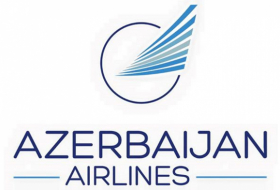The findings come from a small new clinical trial, published in the journal Appetite, which compared food consumption among 39 women who had taken part in a previous year-long weight-loss study and 63 women who were not part of the earlier study. All of the women came to the study lab once a week for four weeks to eat a meal, with varying portions of seven different foods served each week.
The women in the first group, as part of the previous study, had been counseled on various strategies for weight loss, including measuring out portion sizes, calculating calorie density of different foods, and making overall healthier choices. Because the training focused heavily on portion control, the researchers expected the women who had participated in those training sessions to eat less food overall.
That didn’t happen, though. Women in both groups fell victim to the “portion size effect,” what researchers call the tendency to eat more when larger portions of food are presented. (For example, when meal size increased by 75%, the average amount consumed went up 27%.) Overall, there was no significant difference in total amount of food consumed, by weight, between those who’d received training and those who had not.
But there was one difference. “When we dug into their food choices, we found that the trained participants were selecting to eat more of the lower calorie-dense foods—like salad, for example—and less of higher calorie-dense foods, such as the garlic bread,” says first author Faris Zuraikat, a graduate student in the department of nutritional sciences. In other words, even though they ate the same total volume of food, they consumed fewer calories.
The study did not measure the women’s weights, and since it only involved four meals over four weeks, the difference in calories likely would not have had any real weight-loss impact. But Zuraikat believes that making healthier choices over time could be an effective way to reduce calories and shed pounds.
That’s not terribly surprising, says Zuraikat, but it’s a good reminder that the ideal diet is not one of deprivation. And even though the women were trained in portion control, he adds, it seems to be the general healthy-eating advice that stuck with them—and it’s what they ultimately put into practice. “It may just be easier to judge which foods are higher or lower in calorie density, versus trying to judge an appropriate portion size,” he says.
Zuraikat says it may be helpful to encourage people to focus on a food’s nutritional quality. “When you’re selecting lower calorie-dense foods, you can eat more of them,” he says. The payoff, he adds, is that you’ll be more likely to feel full and satisfied.
Even though the women in the study underwent special training, Zuraikat says there are a few basic rules that anyone can follow if they want to make more low-calorie choices. For starters, foods with a high water content—like fruits and vegetables—tend to have a lower calorie density than foods with less water. He also recommends checking out the Volumetrics Diet, designed by his study co-author Barbara Rolls, PhD, and based on the concept of low calorie-density foods.
“We don’t want people to think they have to eat salad all the time,” Zuraikat says. “But there are ways to incorporate water-rich ingredients into every meal, so you can keep the same level of palatability and enjoy the same amount of food while still focusing on your weight-loss or weight-maintenance goals.”
This article originally appeared on Health.com
More about: #Health
















































